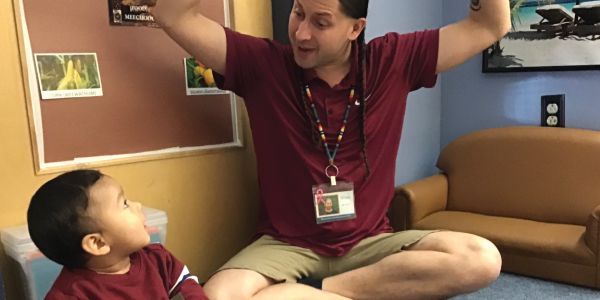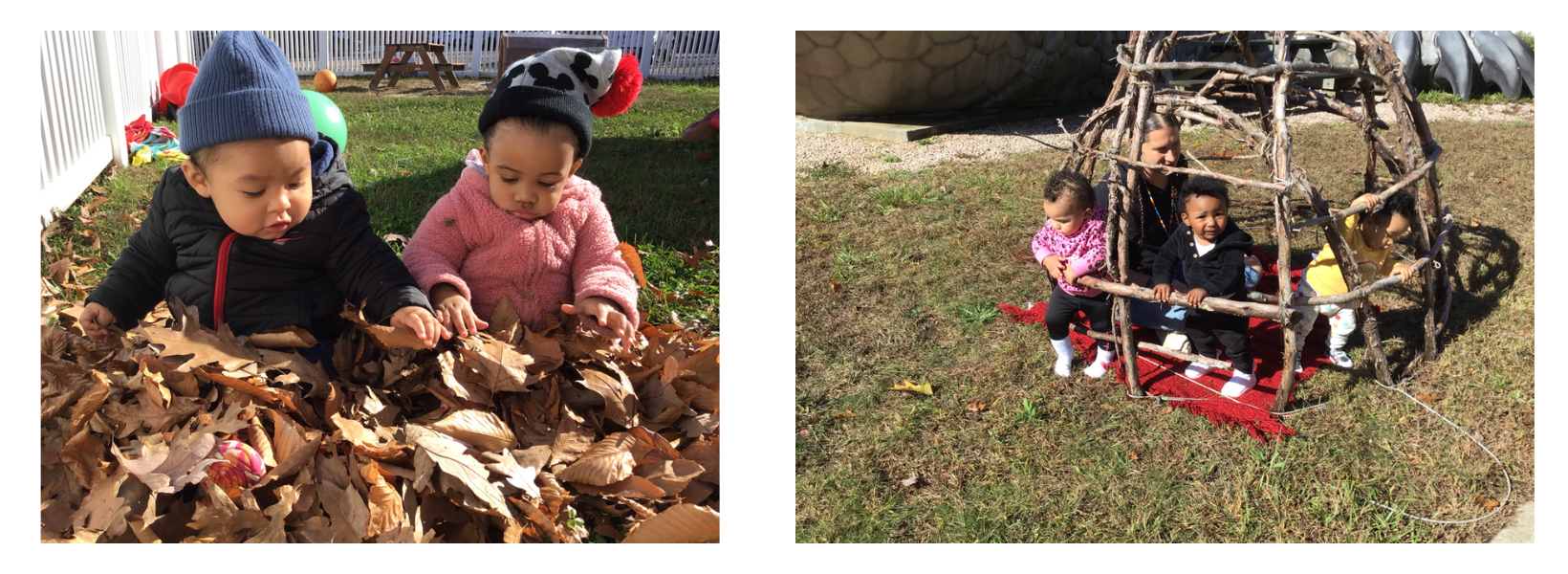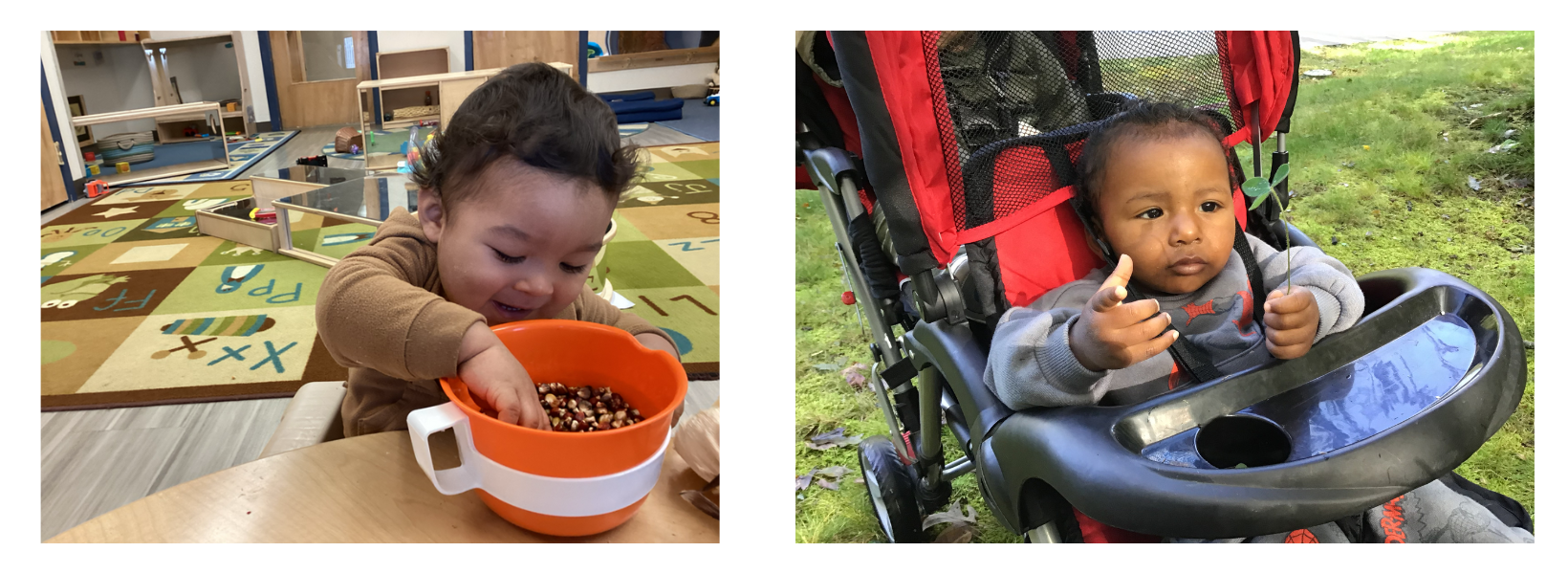Member Spotlight: Brent Spears

You are here
Early childhood educators are flexible, innovative, and committed to children and each other. When we see a need, we strive to meet it. This tenacity is exemplified by Brent Spears, who we met at the 2022 Annual Conference in Washington, DC. While attending the conference Expo, Brent discovered that NAEYC’s Tribal and Indigenous Early Childhood Network needed a facilitator. He contacted us that day and began leading the network in January 2023. We’re excited with the ways Brent is elevating the voices of tribal and Indigenous practitioners throughout the country, and we are inspired by his passion as a teacher in the field.
—Michelle Kang, Chief Executive Officer
Brent Spears is driven by a passion to help the often silenced find their voice. As a gay, White and Indigenous man, he knows what it feels like to be marginalized.
“From 15 to 18, I had no education,” says Brent, who grew up in Oklahoma on the Mvskoke, Muscogee (Creek) reservation. “I had identified as a gay young man. And that hadn’t gone over so well. So I was working six days a week at a gas station, a fast-food place, and digging ditches, literally.
“But there’s beauty in that, right?” he continues. “I paid for my own testing. I paid for my own college. That’s where I met my husband.”
Brent earned an associate degree in general studies in 2018. In 2019, he joined the Native American Early Childhood Education Scholars Program at the University of Massachusetts Boston. The program, funded by a grant from the US Department of Education’s Office of Indian Education, helps Indigenous students earn their bachelor’s degrees in early education and care in inclusive settings.
Today, Brent claims the power of his experiences, his heritage, and the intersecting aspects of his identity in the service of children. He is the lead teacher of infants and toddlers at the Mashantucket Pequot Tribal Nation Child Development Center, an early childhood program in Mashantucket, Connecticut, that has been managed by Bright Horizons since 2012. He is dedicated to efforts and organizations focused on diversity, equity, inclusion, and belonging, including NAEYC’s Tribal and Indigenous Early Childhood Network and the People of Color Caucus.
Brent and his husband live in Connecticut with their two sons. Following, he shares some of his experiences and observations about the importance of Indigenous culture and education.
You head NAEYC’s Tribal and Indigenous interest forum. Why is that appealing to you?
First, the Tribal and Indigenous Early Childhood Network was created by many great Indigenous scholars before me, and I am so grateful for that advocacy and pathway being built.
My vision for the network is to help it grow into a centralized hub for early childhood educators who are from different communities. Tribal and Indigenous people make up 1 percent of the population, and that’s according to what’s recorded. I would like others to know how to explore our extremely diverse and unique peoples without fitting us into one box, one look, one culture. The federal government recognizes 574 Indigenous nations, and that’s not counting state-recognized and unrecognized nations!
Representation is a theme that runs throughout your life and work. How does it manifest in your teaching?
Most Indigenous people are already born and raised as advocates and educators. Why? Because they have to explain themselves and educate others about themselves. It’s ingrained in me. I have this immense drive to help children learn as much as they can, so they become vibrant with the knowledge to unmask truths and realities and to live in a better future. These children who exist right now, who are playing outside this room [at our center], they’re here because their ancestors persevered. That resiliency shows through history, and it’s present before our very eyes. When you’ve experienced numerous biases in your life, that drives you to be better, right?

You have issued a call on the interest forum asking tribal and Indigenous educators to share how they use Indigenous languages in their learning settings. Why is it important to represent and showcase these languages?
Language is important for so many reasons! There was no written history, at least within the United States, before colonization arrived. Most Indigenous peoples had oral history—their stories were spoken. But Indigenous languages have been rapidly disappearing. They are a part of our core identity, so losing them is losing a part of ourselves.
Because fluency was lost in the community I work in, I use a lot of language mixing, or code switching. Although the language needs to be portrayed in its uncolonized structure, I also like to replace words in songs. For instance, when we sing “Itsy Bitsy Spider,” I’ll switch out the word “sun” for “muyoon.” In other instances, I’ll use “awasoohs” instead of “bear.” Growing up, hearing fluent models of Mvskoke singing always made me feel so safe. I hope one day to collaborate and create a lullaby that the people of this nation can enjoy for years to come.
How did you decide to enter early childhood education?
My husband and I moved to Connecticut to be close to his family. He had worked at the Mashantucket Pequot center and said, “You know, I think you’d be really good at this.” So I started from the ground up. I was a floating assistant, but once I worked in the infant and toddler classroom, I knew this was where my heart was. I went to my bosses and said, “I would like to make myself a home base here.”
At one point, because of financial reasons, I decided to move out of the field. I began delivering mail part time. But I really missed being with the children. I could see myself in them: I was that Indigenous child. I was that mixed Indigenous child. Being able to be here, to be present with these mixed Indigenous and Indigenous children, is every reward I can think of. That began the domino effect. I finished my associate degree and entered the UMass scholars program.
At your child development center, a curriculum is provided to you. Share some of the ways you weave children’s culture into learning experiences.
A typical day in our classroom is filled with many implementations from Bright Horizons, our staff, and most importantly, the children’s tribal nation. There’s a lot of integration. When our curriculum called for drumming, we listened to and explored powwow drums and water drums and hand drums. I’ve recently been remodeling our classroom with natural materials that reflect our community, such as shelves made from white birch or the display of traditional wooden games.
Every year, we grow our own corn, beans, and squash on our little infant and toddler playground. These are the three sisters of folklore from many of our nations: the corn is to grow tall; the beans are to climb the corn; the squash is to shade the ground around the corn and beans. I extend this activity throughout the year. We grow the corn, beans, and squash. We harvest them. We observe them. We take the whole corn stalk out of the ground and touch it. We dry the corn, and then we break it down, and I put it in sensory jars. We use the corn cob to dip in paint and roll across canvas. The next year, we take the seeds and replant them. We’re continuing a full circle. Even though the children won’t remember it all, what a journey! Being an Indigenous person and being able to implement this in a field that I’ve learned I was meant for is beautiful. Just beautiful.

How does NAEYC help you in this work?
NAEYC has impacted me greatly! I’ve been a member for the past 3 1/2 years. I began to fall in love with NAEYC literature while studying at UMass Boston. NAEYC’s numerous books and other texts and the Annual Conference have been most helpful. The compassion and drive of member educators who are striving every day for equity influence me to work harder.
What lessons have you learned through your work with Indigenous children, and what advice do you have for other early childhood educators?
I had a rough early childhood. From birth to age 5 was rough. It drove me to be there for children. When you’ve experienced numerous biases in your life, that drives you to be better, right?
One important piece of advice is to always go to your source. Literally. If you want to teach about Indigenous people, find your local communities or find someone to direct you to them. This concept should always be considered for and by all populations. And don’t forget how much we have in our hands as educators. The possibilities are endless!
SHARE YOUR STORY Answer a few questions to tell us about your work with young children and what NAEYC membership means to you.
NOMINATE A MEMBER Share why a NAEYC member you know should be recognized for their work with young children.
Photographs: courtesy of Brent Spears.
Copyright © 2024 by the National Association for the Education of Young Children. See Permissions and Reprints online at NAEYC.org/resources/permissions.